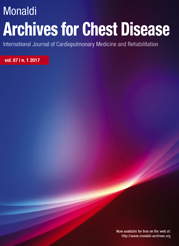Use of a novel ultrasound sign in the management of malignant pleural effusions: a prospective observational trial
All claims expressed in this article are solely those of the authors and do not necessarily represent those of their affiliated organizations, or those of the publisher, the editors and the reviewers. Any product that may be evaluated in this article or claim that may be made by its manufacturer is not guaranteed or endorsed by the publisher.
Authors
The management of malignant pleural effusion (MPE) is influenced by the lung’s ability to re-expand following fluid drainage. Lung entrapment can complicate this process and may be predicted using pleural manometry. Recently, a novel lung ultrasound (LUS) marker—the sinusoidal sign—has emerged as a potential tool to differentiate between expandable and entrapped lung prior to thoracentesis. A prospective observational study was conducted to evaluate the role of pre-drainage LUS in identifying entrapped lung and compare its diagnostic accuracy with pleural manometry. A total of 30 patients with MPE were enrolled. Prior to thoracentesis, targeted ipsilateral LUS was performed at the level of the atelectatic lung. M-mode displacement <1 mm was considered indicative of an absent sinusoidal sign. Simultaneously, pleural manometry was conducted during thoracentesis to measure pressure changes and calculate pleural elastance. Lung expandability was determined based on pleural elastance and post-thoracentesis imaging findings (computed tomography thorax). A pleural elastance >13.6 cm H₂O/L was considered diagnostic of lung entrapment. A pleural elastance cut-off of 13.6 cm H₂O/L demonstrated 100% sensitivity, 93% specificity, a 100% positive predictive value, and 84.2% negative predictive value. The absence of the sinusoidal sign on LUS had a sensitivity of 78.6% and specificity of 100% in identifying entrapped lung. Both absent sinusoidal sign on pre-drainage LUS and elevated pleural elastance (>13.6 cm H₂O/L) during thoracentesis are reliable indicators of lung entrapment in MPE. LUS may serve as a useful, non-invasive bedside tool for early identification of non-expandable lung.
Ethics approval
Ethics approval was obtained from the All India Institute of Medical Sciences, Jodhpur, India. Approval number: AIIMS/IEC/2020/3318.How to Cite

This work is licensed under a Creative Commons Attribution-NonCommercial 4.0 International License.






